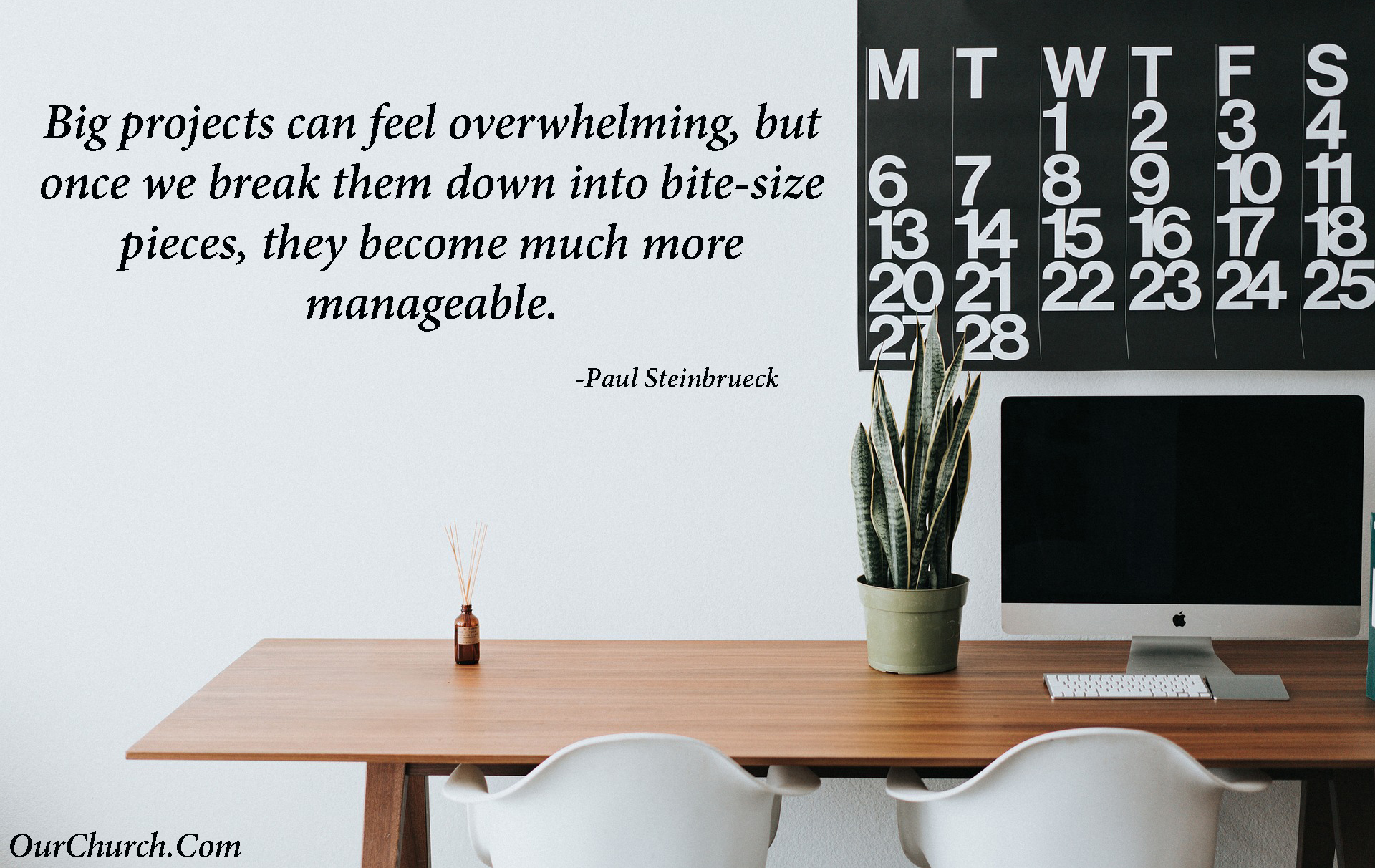We continue through “Get it done!” month, in which our goal is to help you accomplish one long overdue website project.
In this article, I’m going to share with you the strategy I use to get things done, a strategy which can be used to get anything done, no matter how big the project. And it’s a strategy that will help make the project feel less overwhelming and more fun. How does that sound?
Would you like to get a lingering project done with less stress and more fun?!?
Who wouldn’t, right?
So, I’m going to share with you the strategy I’ve developed through 25+ years of project management.
10 Steps to Get Any Project Done
1) Commit
The biggest reason people fail to complete a project is they aren’t really committed to it. Let’s say your website is really old and needs to be redesigned. You want to switch to a new theme, update the content, and add new pictures. You want to do it, but you have a lot of other things that are higher priority – other job responsibilities, family, friends, household chores.
You want to redesign your website, but it’s more like wishful thinking that somehow you’ll do it in your spare time, which you have to admit will probably never happen, because who has spare time, right?
Therefore, if you want to get any project done, you have to take it from the “hopefully someday” realm and genuinely commit to it.
2) Ask someone to hold you accountable
If you are the only one who knows about your commitment to complete the project, it’s really easy to back out, change plans or “forget.”
Therefore, the next step is to ask someone to hold you accountable for completing the project.
In most work settings this is usually pretty easy. Your boss or coworkers probably know what projects you’ve been assigned or are committed to (unless you’re a solo practitioner).
But if your project is for a personal ministry, a new business you’re starting, or your workplace doesn’t have built-in systems for accountability, then you’ll need to reach out to someone, tell them about your commitment, and ask them to hold you accountable.
If you’d like some help with that, join our private Facebook group and let your fellow OCC members know about the project you’re going to complete.
Plan Your Project
Now that you’re committed to your project and you know someone is going to hold you accountable, it’s important to plan your project in a way that makes it manageable and fun.
Let’s break the project planning down into clear and simple steps.
3) List all the tasks
List everything you can think of that needs to be done to complete the project. If you’re building or redesigning a website, include pages you want to add, content you need to create (or get from others), new photos you want to take, info you want to add to the calendar, etc.
Pro Tip: If this is the first time you’ve ever done this type of project, it’s important to research it and/or talk with experienced experts. The last thing you want is to list all the tasks you’re aware of and then find out when you’re way down in step 6 that you left a whole bunch of tasks out and either it’s not going to work or it’s going to take far longer than expected.
Pro Tip: Make sure every task is specific and small enough to do in an hour or less. For example, you don’t want a task like “Write the remaining content for all web pages.” That’s too vague and could take hours depending on how many pages you have. Instead, list each page that you have to write content for.
Why do we do this? It goes to that old joke… how do you eat an elephant? One bite at a time.
Big projects feel overwhelming, but once we break them down into bite-size pieces, they become much more manageable.

Plus, psychologists tell us every time we complete a task, our brains release a chemical called dopamine, which makes us feel happy. Breaking your big project into small tasks makes you happy every time you complete one of those tasks. 🙂
4) Break your long task list into 3 lists
Again I’m going to use the example of building or redesigning a website.
Must do (Phase 1) – These items are absolutely critical to get done before you launch your website. You wouldn’t launch your site without correct contact info, or information about events coming up in the next 2 weeks.
Important (Phase 2) – These items you could launch without, but they are helpful, people will be looking for them, so you want to get them done soon after launch.
Optional – These items would be nice, but your organization will do fine without them. Things like starting a blog, adding a “community resources” page, selling your merch through your site.
Why do we do this? Because we want to get the site launched as quickly as possible, and to do that we want to focus just on the tasks that need to be done to make that happen.
5) Prioritize and schedule your Must Do (Phase 1) list.
Take the items on your Must Do list and organize them in order of importance. Yes, actually give a deadline – a date – to get each item done.
Pro Tip: Revise those dates and give yourself twice as much time to get each item done as you think you’ll need. Seriously, things come up and most things take longer to do than we expect. If you want building your website to be fun and enjoyable, you can’t be behind schedule on your 2nd week.
Why do we do this? Because we don’t want all the “Must Do” tasks looming over us all the time. It feels much lighter to have just 1 or 2 things on your to-do list for the day, and it feels good to be able to cross them off that list.
6) Complete your Must Do (Phase 1) tasks by their deadlines.
When you’re planning your week and planning each day, make sure the tasks and deadlines you planned for this project make their way into your daily schedule.
7) Launch & Celebrate!
With all the Must Do tasks done, you’ve completed Phase 1 and your project should be ready to launch. As we discussed earlier, the project is not complete, however, it’s better to get the minimum project launched so you can start experiencing its benefits sooner rather than later.
Don’t forget to celebrate this big milestone!
8) Prioritize and schedule your Important (Phase 2) tasks.
Once you’ve completed Phase 1 and launched your project, follow the same process to prioritize and schedule your Important tasks. Again, revise your deadlines to give yourself 2x the time so you have margin when things take longer than expected and life happens.
9) Complete your Important (Phase 2) tasks by their deadlines and celebrate!
As mentioned earlier, make sure the tasks and deadlines make it onto your daily schedule, so you meet those deadlines.
And when you’ve completed all the Important tasks, it’s time for another big celebration!
10) Reconsider Optional tasks
At this point you’ve completed Phase 1 – Must Do tasks and Phase 2 – Important tasks. You may want to take a break and focus on other projects now. Eventually though, it’s a good idea to come back to the list of optional tasks and decide whether they are worth pursuing, and if so when.
That’s it. That’s my 10 step process to complete any project. But before I wrap up this extensive article, I’ve got one last thing to share with you.
Pro Tip: Time vs Money
Most DIY projects come down to weighing the value of your time vs the cost of paying someone else to do it for you. After you list out your tasks, set deadlines and schedule those tasks, if you find that it’s more work than you have time for or you find that you want the project done sooner than you can complete it yourself, you can hire our team to get it done for you. This includes:
Set up, complete, or migrate a website with our WP-EZ Website Builder
Comment & Discuss
What project are you going to complete? What step are you on?



2 Comments
Very informative
Very informative